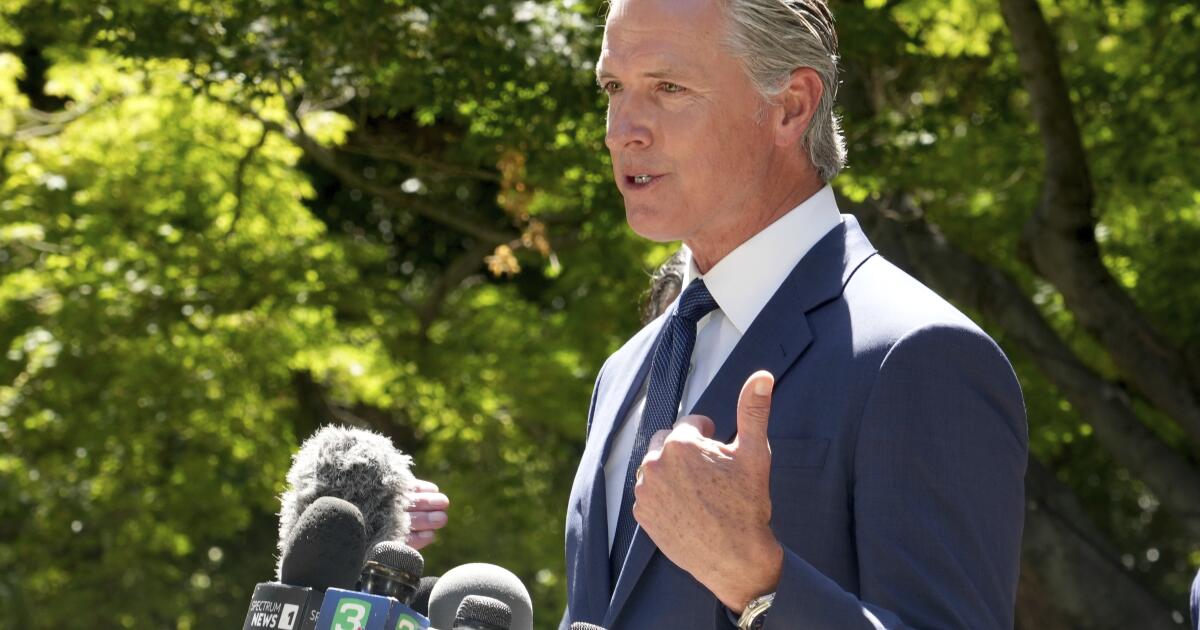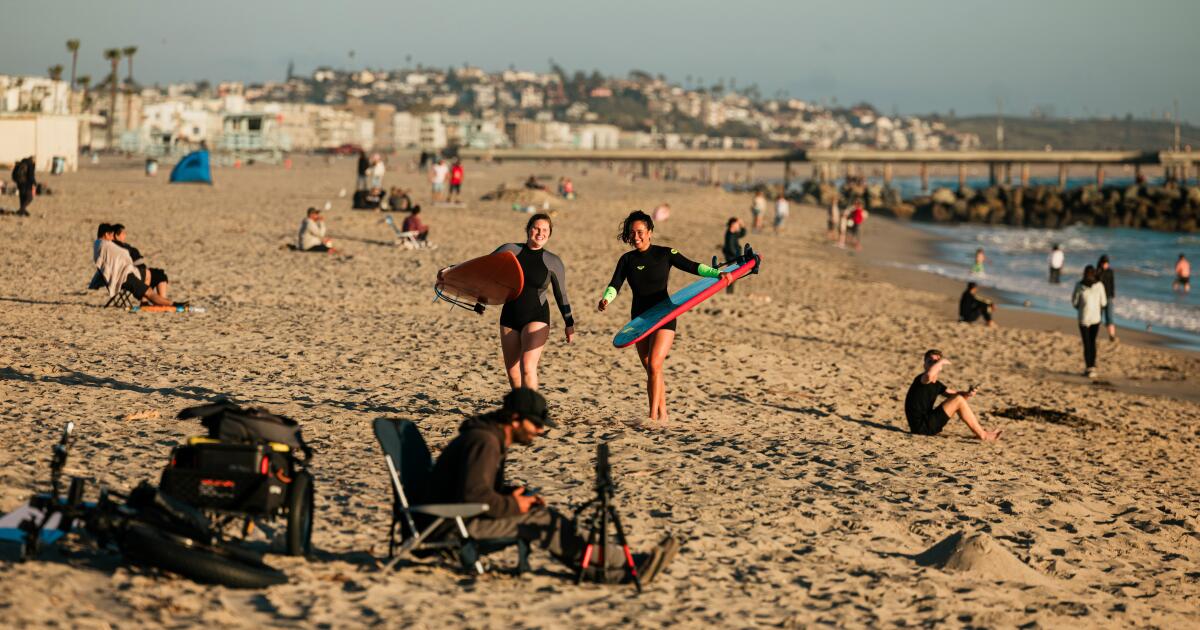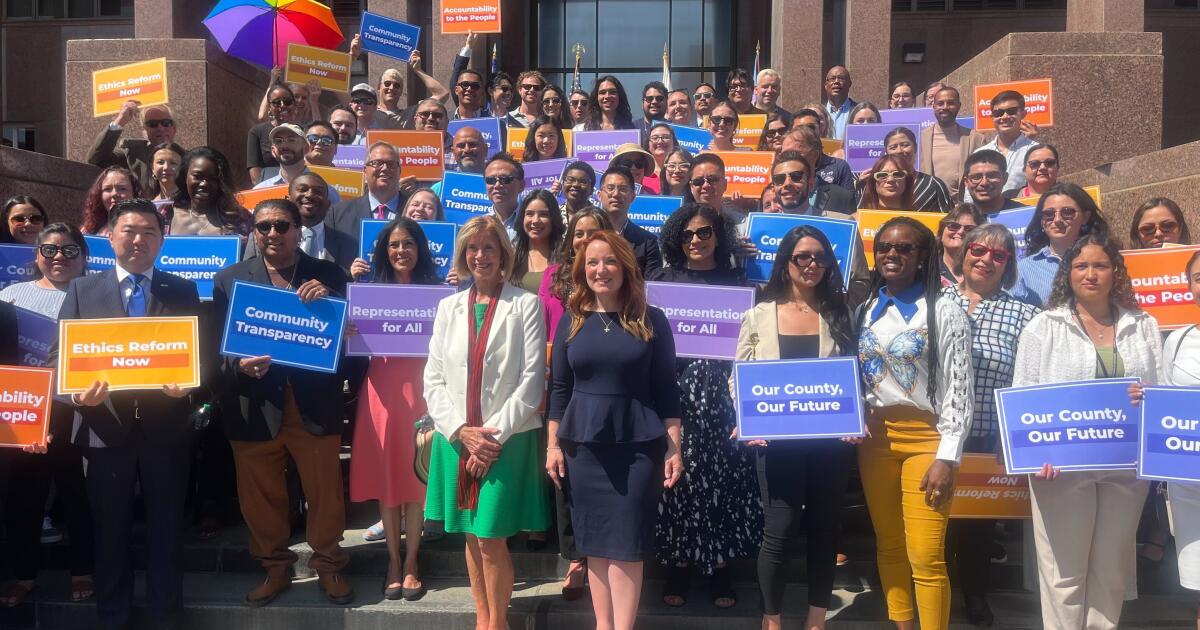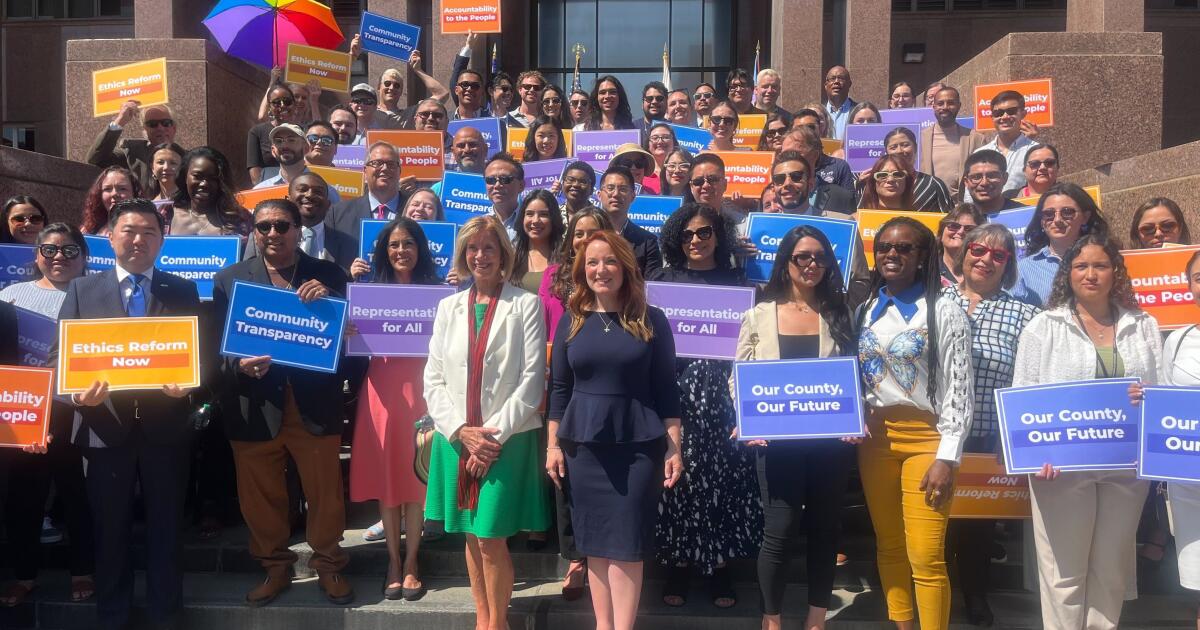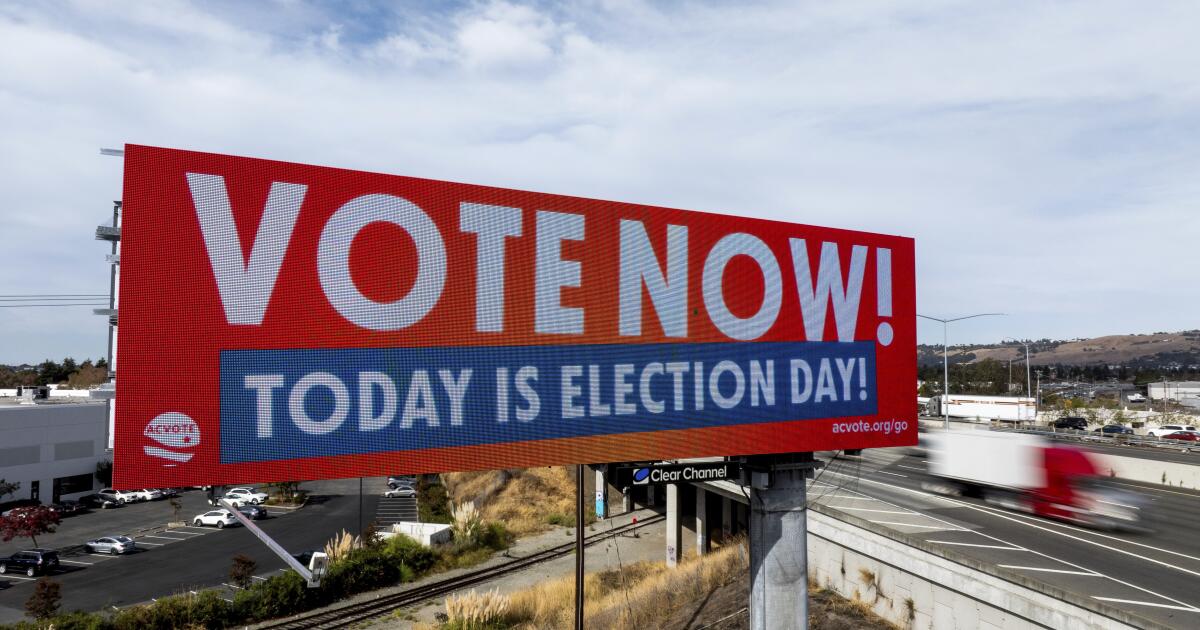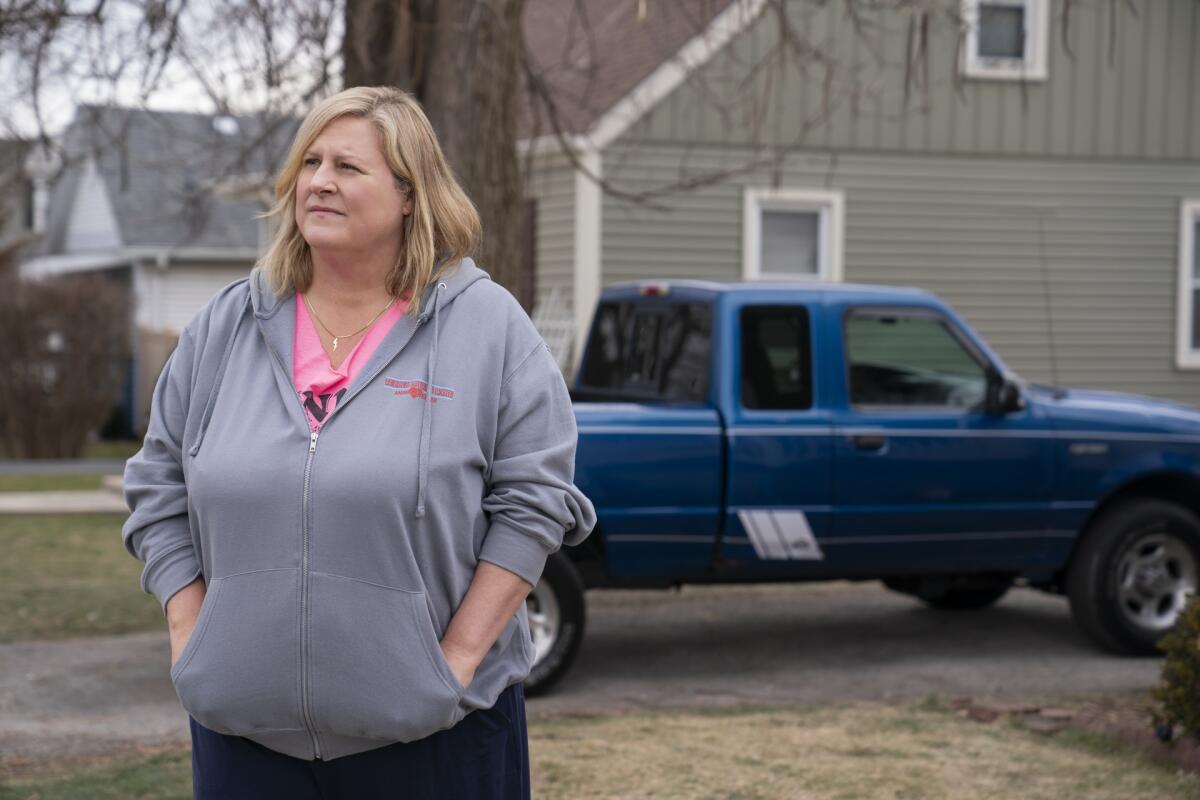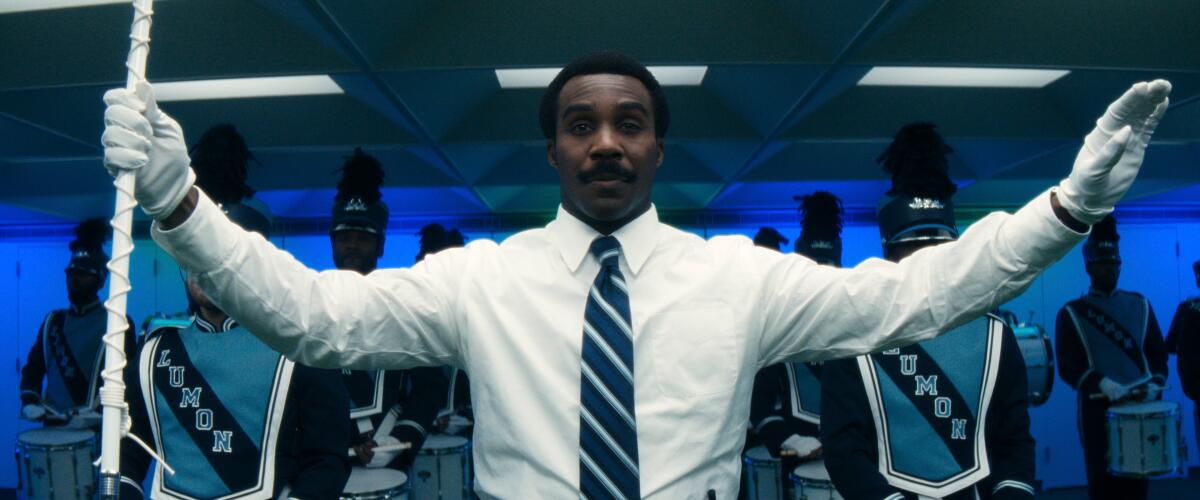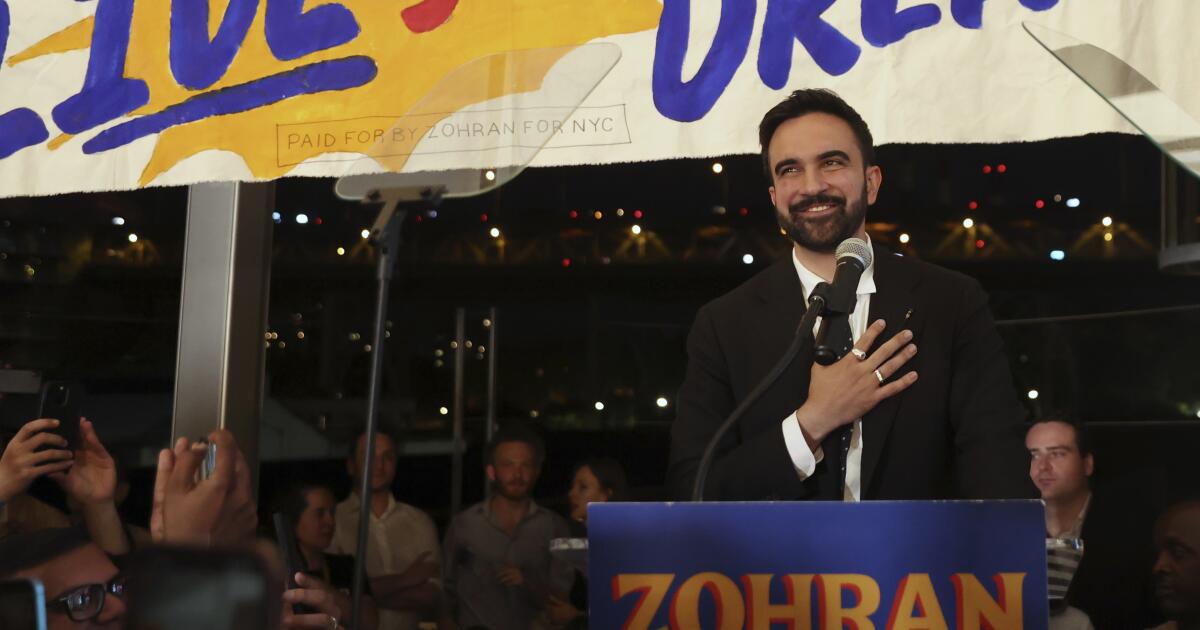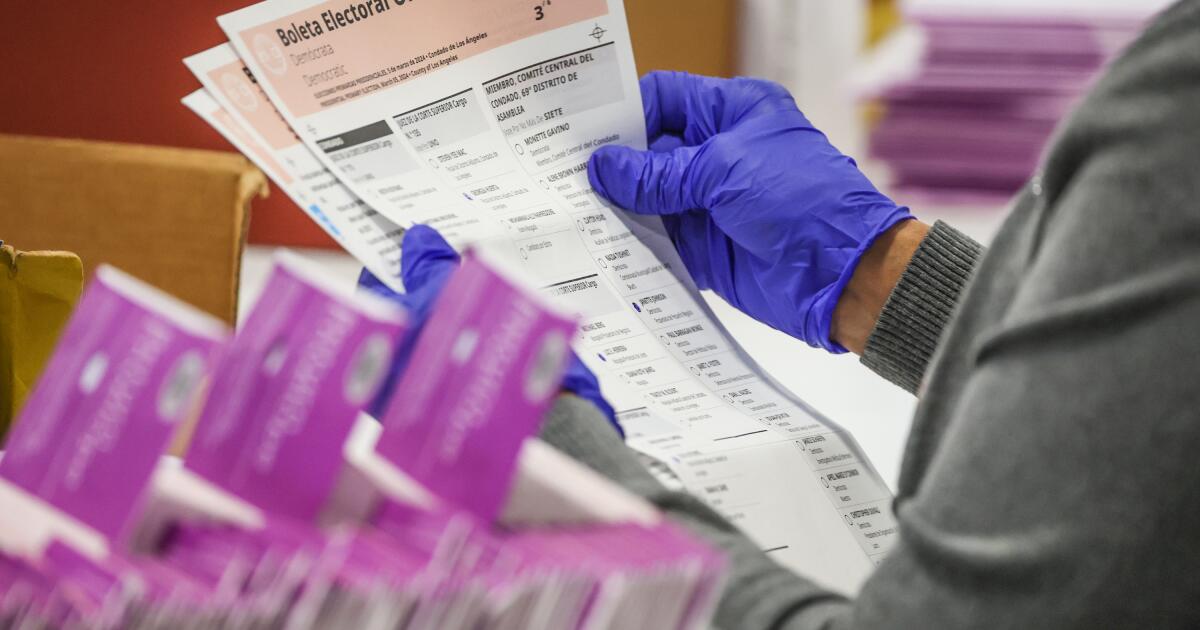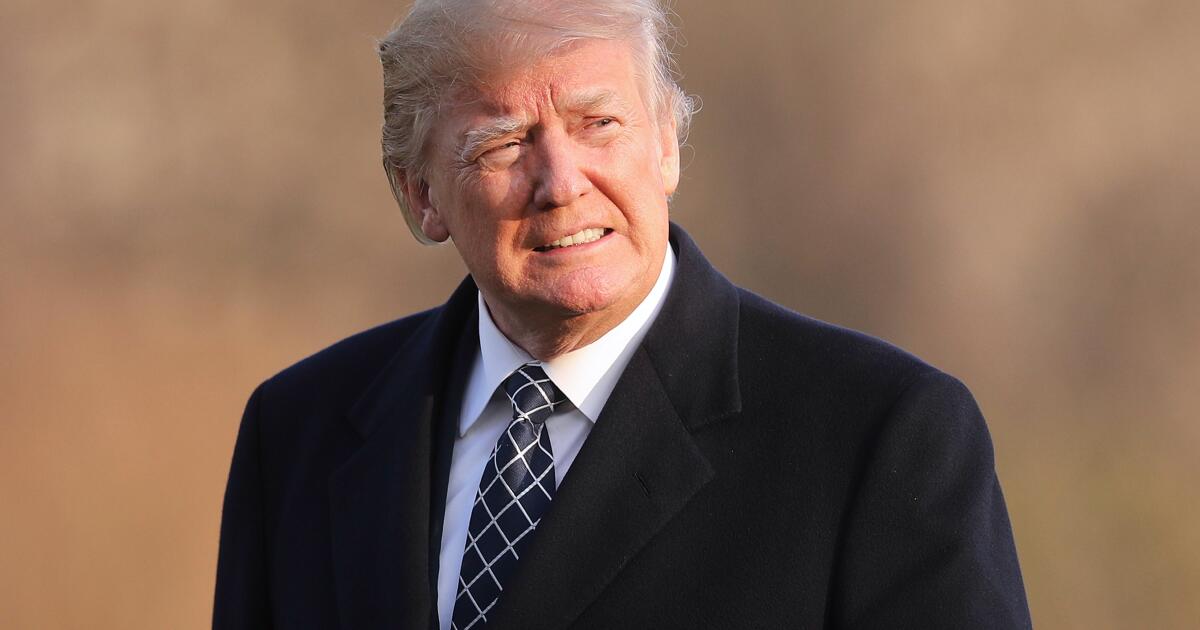WASHINGTON — A last-ditch effort by California Democrats to redraw the state’s congressional map for the 2026 election, countering a similar push by Texas Republicans, is now up against the clock.
Gov. Gavin Newsom said Monday that Democrats are moving forward with a plan to put a rare mid-decade redistricting plan before voters on Nov. 4. But state lawmakers will craft a “trigger,” he said, meaning California voters would only vote on the measure if Texas moved forward with its own plans to redraw Congressional boundaries to add five more Republican seats.
“It’s cause and effect, triggered on the basis of what occurs or doesn’t occur in Texas,” Newsom said. “I hope they do the right thing, and if they do, then there’ll be no cause for us to have to move forward.”
Democratic lawmakers in Texas on Monday left the state to deprive Republicans of the quorum needed to pass the new maps. Republican lawmakers voted 85 to 6 to send state troopers to arrest them and bring them back to the Capitol, a move that is largely symbolic, since the lawmakers won’t face criminal or civil charges.
The outcome of the dueling efforts between Texas and California could determine which party controls the House of Representatives after the 2026 midterm elections, which Democrats see as the last bulwark to President Trump’s actions in his second term. Trump has pushed Republicans to add more GOP seats in Texas, hoping to stave off a midterm defeat.
Democrats hold 43 of California’s 52 congressional seats. Early discussions among California politicians and strategists suggest that redrawn lines could shore up some vulnerable incumbent Democrats by making their purple districts more blue, while forcing five or six of the state’s nine Republican members into tougher reelection fights.
But nothing official can be done until state lawmakers return from recess to Sacramento on Aug. 18.
Democrats, who hold a supermajority in the Legislature, would have less than a month to draw a new map, hold hearings and negotiate the language of a bill calling for the special November election, leaving just enough time for voter guides to be mailed and ballots to be printed.
Democratic lawmakers and operatives said Monday that the timeline is doable, but they would have to act quickly.
California’s Democratic congressional delegation expressed consensus during a video meeting Monday with moving forward with a ballot measure that would allow mid-decade redistricting only if another state moves forward with it, according to a person familiar with the virtual meeting, and that the change would be temporary. They expressed their support for the independent commission.
California Assembly Speaker Robert Rivas said the Democratic caucus met Sunday night “to discuss the urgent threat of a continued, blatant Trumpian power grab — a coordinated effort to undermine our democracy and silence Californians.”
Democrats in the California Senate and Assembly held separate meetings to discuss redistricting. David Binder, a pollster who works with Newsom, presented internal polling that showed tepid early support among voters for temporarily changing state laws to allow the Legislature to draw new maps for elections in 2026, 2028 and 2030.
“Our voters must be empowered to push back,” Rivas said. “California has never backed down — and we won’t start now.”
Texas Democrats resist
Democratic lawmakers’ exodus from Austin on Monday denied Republicans the quorum necessary to proceed with a vote on a redrawn state map that could net Republicans five congressional seats.
Democratic lawmakers balked at threats from Republican Gov. Greg Abbott. The Texas House Democratic Caucus put out a statement riffing on a slogan made famous during the Texas Revolution: “Come and take it.” One member of the caucus noted that being absent was not a crime and that Texas warrants can’t be served in Illinois or New York, where many lawmakers have gone.
“There is no felony in the Texas penal code for what he says,” said Rep. Jolanda Jones, a Democrat. “He’s trying to get soundbites, and he has no legal mechanism.”
The Texas House Republican speaker, Dustin Burrows, said that Democrats leaving does not “stop this House from doing its work. It only delays it.”
But Abbott’s legal options to get his redistricting bill passed, by expelling Democrats or compelling their return, appear narrow, likely forcing the governor’s office to make challenges in courtrooms based in Democratic districts. Abbott has until the end of the year to secure new maps for them to be used in the state’s March 3 primaries.
At a news conference last week in Sacramento, Newsom compared Trump’s pressure on Abbott to add five Republican congressional seats as akin to his efforts to “find” 12,000 votes to win Georgia after the 2020 election.
“We’re not here to eliminate the commission,” he said. “We’re here to provide a pathway in ’26, ’28 and in 2030 for congressional maps on the basis of a response to the rigging of the system by the president of the United States. It won’t just happen in Texas. I imagine he’s making similar calls all across this country. It’s a big deal. I don’t think it gets much bigger.”
Escalation on a deadline
For decades, redrawing California’s electoral maps amounted to political warfare. In 1971, then-Gov. Ronald Reagan vetoed a redistricting plan that he called “a mockery of good government.” The California Supreme Court ultimately drew the lines, and did so again in 1991, when then-Gov. Pete Wilson rejected maps drawn by Democrats.
California’s state lawmakers last drew their own district lines in 2001, after members of both parties signed off on a plan drawn up to protect incumbents.
In 2008, California voters stripped state lawmakers of the power to draw their own districts by passing Proposition 11, which created an independent redistricting commission. Two years later, voters handed the power to redraw congressional district maps to the same panel by passing Proposition 20. That group drew the lines before the 2012 elections, and again after the 2020 census.
California set the date for its last statewide special election — the 2021 attempted recall of Newsom — 75 days in advance. County election officials would need at least that much time to find voting locations and prepare ballots for overseas and military voters, which must be mailed 45 days before election day, one elections official said.
“We need at least a similar timeline and calendar to what took place in 2021 for the gubernatorial recall election,” said Dean Logan, the top elections official in Los Angeles County.
Similarly, he said, counties will “need the funding provided upfront by the state to conduct this election, and the funding to do the redistricting associated with it, because counties are not prepared financially.”
The 2021 recall election cost California taxpayers about $200 million. The preliminary estimate for Los Angeles County to administer the redistricting election is about $60 million.
National fight over state lines
Republican strategist Jon Fleischman, former executive director of the California Republican Party, said Republicans nationally need to take state Democrats’ efforts to redraw the maps seriously — by pulling out their checkbooks.
“Our statewide Republican fundraising has atrophied because it has been over a generation since we had a viable statewide candidate in California,” he said. “The kind of money that it would take to battle this — it would have to be national funding effort.”
While Texas prompted California Democrats to take action, Fleischman said, the issue has enough momentum here that it ultimately doesn’t matter what Texas does.
“If Gavin Newsom places this on the ballot, it means he’s already done his polling and has figured out that it will pass because he cares more running for president that redistricting in California,” Fleischman said. “And he knows he can’t afford to make this play and lose.”
Former Gov. Arnold Schwarzenegger, a Republican who championed the ballot measure that created the independent redistricting commission, has not weighed in on the mid-decade redistricting efforts in Texas and California. But a spokesperson for the former governor made clear that he vehemently opposes both.
Since leaving office, Schwarzenegger has fought for independent map-drawing across the nation. Redistricting is among the political reforms that are the focus of the Schwarzenegger Institute at USC.
“His take on all of this is everyone learned in preschool or kindergarten that two wrongs don’t make a right. He thinks gerrymandering is evil,” said Daniel Ketchell, a spokesperson for Schwarzenegger. “It takes power from the people and gives it to politicians. He thinks it’s evil, no matter where they do it.”
Wilner reported from Washington, Nelson and Mehta from Los Angeles and Luna from Sacramento.

